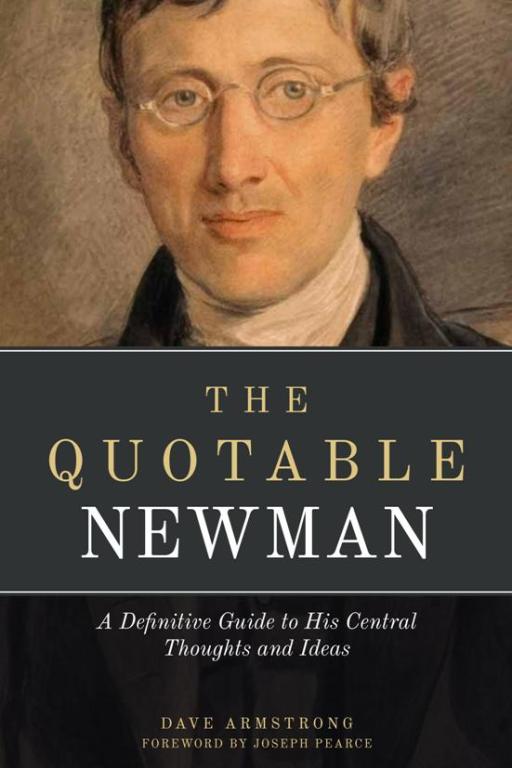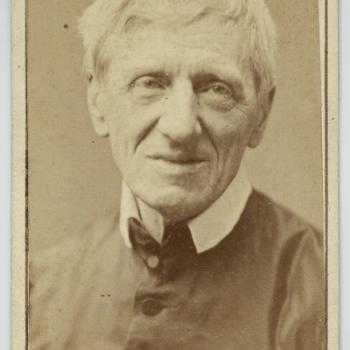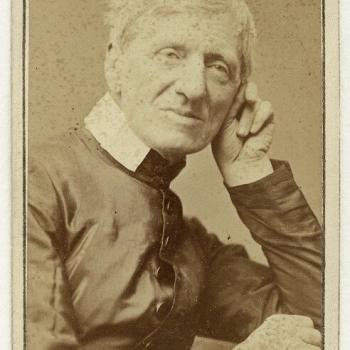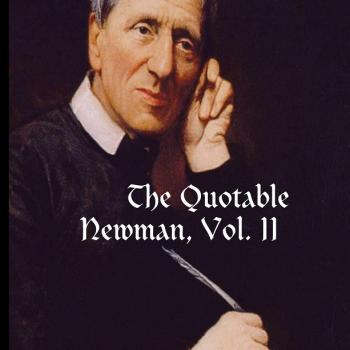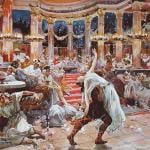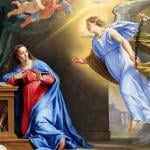In 2010, I was honored to be among the official press commentators for Pope Benedict XVI’s visit to Britain. It was indeed a joy and a privilege to follow the Pope as he visited venues in London which resonated with Catholic significance. He visited Westminster Hall, in which St. Thomas More had stood trial, and visited Westminster Abbey to pray at the shrine of St. Edward the Confessor. He blessed the crowds in Hyde Park, only a stone’s throw from the site of Tyburn Tree, the Machiavellian altar on which numerous Catholic Martyrs were slain. It was as though the places selected for the Pope’s visit had been carefully chosen to remind Englishmen of their Catholic heritage and to warn of the dangers inherent in secularist intolerance towards the Church. The purpose of the Pope’s visit, however, was not primarily to celebrate England’s Catholic heritage but to beatify John Henry Newman. In so doing, the Pope was not so much celebrating history as making it. Newman was the first Englishman, other than the Martyrs, to be beatified since the Reformation; he was also the first Englishman born since the 17th century to be raised to the altar.*
John Henry Newman was born in 1801, at the very dawn of the 19th century, and lived until 1890 as the sun began to set on this most catalytic and cataclysmic of epochs. During Newman’s long and eventful life, new ideas would cause seismic shifts in the way that modern man perceived himself. Karl Marx adapted the ideas of Hegel in the service of revolutionary politics, thereby unleashing an ideology which would claim the lives of tens of millions of people in the following century. Charles Darwin proposed the evolution of species from primitive beginnings, thereby initiating the notion of biological progressivism and the chronological snobbery which is its consequence. Friedrich Nietzsche declared brazenly that God was dead, thereby deifying Man. Sigmund Freud supplanted the conscious will with subconscious complexes, thereby supplanting rational moral choices with irrational psychological urges. Revolutions swept across Europe as nationalism and socialism threatened the old order, sowing the seeds of National Socialism and its international communist Big Brother. The British Empire swept across the world, laying the foundations of globalism. It was a time of change and uncertainty and yet, at the same time and as the life of Newman testifies, it was also a time of religious revival and resurgent traditionalism.*
Newman’s own place within the Catholic Revival is paramount. He is indeed the very Father of the Revival itself.*
At the time of Newman’s birth, the Catholic Church in England had been largely rooted out of the national life and consciousness. Between the 1530s and 1680s countless Catholics had been put to death for their faith. There are more than a hundred canonized and beatified English martyrs and many others whose final sacrifice for the Faith has not been officially recognized by the Church. In the wake of the so-called “Glorious” Revolution of 1688, which deposed the Catholic monarch, James II, two Jacobite uprisings sought the return of the true King’s heirs to the throne. In the second of these uprisings the followers of Bonnie Prince Charlie were finally defeated at the Battle of Culloden in 1746, crushing any realistic hope of the return of a Catholic monarchy. At this point, after more than 200 years of relentless persecution, all seemed lost for England’s shrinking Catholic population. A small number of recusant families, who had clung on to the Faith doggedly and dogmatically in defiance of the ongoing war of attrition against them, had resigned themselves to a place on the margins of English life, excluded from preferment in politics and society by the ingrained and institutionalized prejudice of their fellow countrymen. This was the world in which Newman was born and in which he was due to play a major role.*
Newman’s conversion in 1845, sixteen years after Catholic Emancipation and five years before the re-establishment of the Catholic hierarchy in England, heralded the birth of a Revival which would see the resurrection of the Faith in the English-speaking world. Prior to Newman’s conversion, Catholicism had been perceived by the British as a foreign religion, espoused by swarthy and superstitious Mediterranean types. As the power of Britain waxed into the fullness of Empire and as the power of Italy, Spain and Portugal waned into relative impotence, it was easy for the British to feel superior and supercilious. Catholicism was a primitive and backward religion for primitive and backward people. Such snobbery was thrown into confusion by Newman’s reception into the Catholic Church. Known as possessing one of the finest intellects of his day, it was difficult to dismiss the submission of such an intellectual giant to the historical and dogmatic claims of Rome.*
Newman had made an intensive study of the early Church and had concluded that the faith of the Church Fathers was the same holy, Catholic and Apostolic Faith as that preached and taught by the Catholic Church of his own day. Newman’s scholarship and his eloquence in expressing it shook the Anglican establishment, throwing into question the presumptions and prejudices on which the foundations of the Church of England were built.*
A wave of converts from the higher echelons of society crossed the Tiber in Newman’s wake as conversion became almost fashionable. At the same time, a huge influx of Irish immigrants, fleeing the potato famine, greatly increased the number of working class Catholics. Almost overnight, Catholicism was becoming a significant force in British society, the presence of a growing number of erudite converts coinciding with the growing plebian presence of the Irish immigrants. The result would be a Catholic Revival which would last for more than a century.*
The first period of this revival could be called the Newman period, stretching from the great man’s conversion in 1845 until his death in 1890. The second period, or what might be called the Decadent interlude, spanned the final decade of the century in which the writers and artists of the fin de siècle flirted with Rome and ultimately succumbed to the charms of the Church. Amongst the converts from this decade were Oscar Wilde, Aubrey Beardsley, Ernest Dowson and Lionel Johnson. The next major period of the revival could be called the Chesterbelloc period, in which the giant figures of Belloc and Chesterton loomed large, which spanned from 1900, the year in which Chesterton was first published, until 1936, the year of his death. The final period called be called the Inklings period in which the figures of Tolkien and Lewis dominated, spanning from 1937, the year The Hobbit was published, until 1973, the year of Tolkien’s death.*
It is arguable that the enormity of the Catholic Revival, which placed Catholicism at the centre and even at the pinnacle of the artistic and cultural life of Britain, would not have happened had it not been for Newman’s conversion, the catalytic nature of which can hardly be overstated.*
Having placed Newman’s importance within its historical context, it is also necessary to look albeit briefly at his influence as an historian, theologian, philosopher, educationist, apologist, novelist and poet.*
Newman’s importance as an historian is rooted in his pioneering work on the Early Church, which convinced him, as it has convinced generations of those who have read him, that a study of the Fathers and of the early heresies provides convincing evidence of the truth claims of Catholicism. Newman claimed and his work has shown that the more one is steeped in history the more one becomes a Catholic.*
As a theologian, Newman is rightly celebrated for his Essay on the Development of Christian Doctrine (1845), which has been hugely influential in the Church’s understanding of how its doctrine develops without ever changing in its essentials. The most succinct encapsulation of this understanding of the development of Church doctrine was given by Tolkien in a letter to his son in which he likened the Church to a tree. It was wrong to see the full-grown tree, i.e. the Church after two millennia of development, as being inferior to the seed from which it grew or the sapling that it had once been, i.e. the early Church. The tree (Church) is the same throughout all the ages, developing and growing organically without ever changing its essential “treeness” (i.e., the truth that the Church teaches and the truth that it is).*
In philosophy, Newman is best known for An Essay in Aid of the Grammar of Assent (1870), which shows the inadequacy of reductionist reasoning, such as logic, as a means of comprehending the fullness of truth. Faith is arrived at by the correlation of converging probabilities to which the will must assent. As an educationist, Newman championed the liberal arts in The Idea of a University (1852), uniting the classics of pagan antiquity to the inheritance of Christendom. As an apologist, his seminal Apologia pro Vita Sua (1864) remains one of the greatest spiritual autobiographies ever written, perhaps the greatest with the obvious exception of Augustine’s Confessions. The role of the apologist is also manifested in his novels, Loss and Gain (1845) and Callista (1855), as well as in his sermons and his theological engagement with the errors of Anglicanism. Last but indubitably not least is Newman’s position as a prose stylist of the highest order and a poet of the first rank.*
Before concluding, passing reference must be made to later generations of famous converts for whom Newman was a major influence. These include Gerard Manley Hopkins, arguably the greatest poet in an age of great poets, who was received into the Church by Newman himself in 1866. Others who were helped significantly on their paths to Rome by Newman include Oscar Wilde, Maurice Baring, R. H. Benson, Christopher Dawson, Ronald Knox, Evelyn Waugh, Graham Greene, Muriel Spark, and Alec Guinness, to name but an illustrious few. Mention should also be made of Hilaire Belloc and J. R. R. Tolkien, two of the giants of the Catholic Revival, who were both educated at the Oratory School in Birmingham which Newman had founded.*
In so many multifarious ways, John Henry Newman has been a blessing to the Church. How appropriate, therefore, that the Church has now conferred a great blessing upon Newman by raising him to the altar. The beatified Newman is in the Presence of the Beatific Vision. He has achieved the only goal for which life is worth living. As such, praise should make way for prayers.*
Blessed John Henry Newman, historian, theologian, philosopher and poet, pray for us.
*


